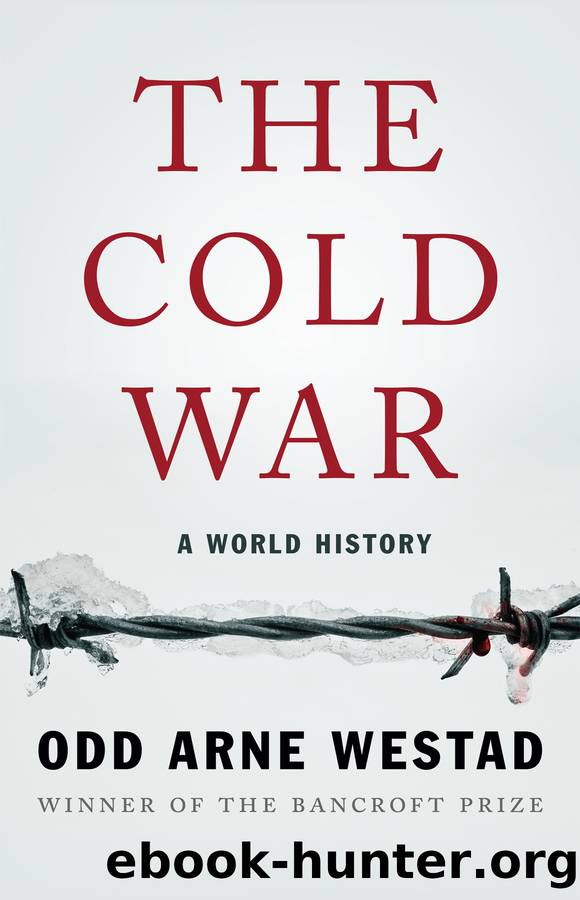Westad, Odd Arne - The Cold War by Westad Odd Arne

Author:Westad, Odd Arne [Westad, Odd Arne]
Language: eng
Format: epub
Publisher: Basic Books
Published: 2017-09-05T00:00:00+00:00
THE COLD WAR in Latin America was internal more than external. It centered on increasingly violent conflicts between the Right and the Left, parts of which became ever-more politically extreme. But Right and Left are complicated categories in Latin America. Within the Left were vicious provocateurs of the Montoneros kind and principled reformists such as Salvador Allende. The split between these two directions became increasingly deep in the latter stages of the Cold War. But the Right was deeply split as well. Some fought simply to keep their massive share of money and resources. Others were deeply ideologically committed to concepts of religion and nation. And some—especially in the small middle class in the Southern Cone—saw the United States as a direct inspiration in terms of politics and the organization of society.
As in so much else, the 1970s became a watershed for these political tendencies in Latin America. The advent of the military dictatorships did not mean “national unity,” as they often proclaimed, but further fragmentation. Within the Left, there was an increasing split between those who believed in the democratic road and those who swore by revolutionary violence. Sometimes these differences were dictated by different histories or national backgrounds: it was a lot easier to believe in a peaceful return to democracy, say, in Uruguay, with its generations of parliamentary rule, than in Nicaragua, in spite of the ugliness of Montevideo’s military rulers.
But often the splits on the Left were a matter of politics or ideology; those inspired by Cuba or by Che Guevara, or by liberation struggles in Africa or Asia, frequently opted for armed resistance. Those who organized in trade unions or within the church and those who belonged to the old Communist parties mostly preferred peaceful activities. Mario Firmenich, who had graduated top of his class at university in Buenos Aires, admired Che Guevara (and Juan Perón), and became the leader of the Montoneros guerrilla group. Luiz da Silva, known as Lula, who had no education, became head of the Steelworkers’ Union in the Brazilian auto-manufacturing town of São Bernardo do Campo, and admired Gandhi and Dom Helder Camara, the radical archbishop of Recife. Lula became the first Left-wing president of Brazil. Firmenich became an economics lecturer in Spain.32
But if the Left was split, so was the Right. The brutal military dictatorships that dominated Latin America in the 1970s had little in common politically, except their disgust at the Left and general references to “order” and “Christian civilization.” While all of them carried out bloody repressions, they had few ideas about how to actually govern their countries—some even sought advice from intellectuals who shared much of the general thinking that had inspired the Left. So it was, for instance, that the Brazilian military dictatorship came to emphasize centralized economic planning and a somewhat Thirdworldist foreign policy in the mid-1970s.
Chile under Pinochet took a very different direction. In a leap of faith it linked its economic future to radical Right-wing US economists that even many Americans regarded as extreme.
Download
Westad, Odd Arne - The Cold War by Westad Odd Arne.epub
This site does not store any files on its server. We only index and link to content provided by other sites. Please contact the content providers to delete copyright contents if any and email us, we'll remove relevant links or contents immediately.
| Arms Control | Diplomacy |
| Security | Trades & Tariffs |
| Treaties | African |
| Asian | Australian & Oceanian |
| Canadian | Caribbean & Latin American |
| European | Middle Eastern |
| Russian & Former Soviet Union |
The Secret History by Donna Tartt(16606)
The Social Justice Warrior Handbook by Lisa De Pasquale(11485)
Thirteen Reasons Why by Jay Asher(7780)
This Is How You Lose Her by Junot Diaz(5753)
Weapons of Math Destruction by Cathy O'Neil(5029)
Zero to One by Peter Thiel(4816)
The Myth of the Strong Leader by Archie Brown(4785)
Promise Me, Dad by Joe Biden(4440)
Stone's Rules by Roger Stone(4412)
Beartown by Fredrik Backman(4403)
How Democracies Die by Steven Levitsky & Daniel Ziblatt(4392)
The Fire Next Time by James Baldwin(4336)
100 Deadly Skills by Clint Emerson(4070)
A Higher Loyalty: Truth, Lies, and Leadership by James Comey(4024)
Rise and Kill First by Ronen Bergman(4008)
The David Icke Guide to the Global Conspiracy (and how to end it) by David Icke(3875)
The Farm by Tom Rob Smith(3869)
Secrecy World by Jake Bernstein(3773)
The Doomsday Machine by Daniel Ellsberg(3725)
